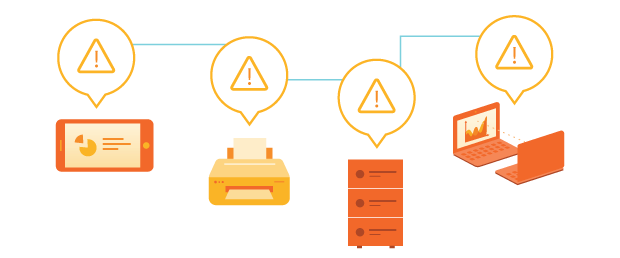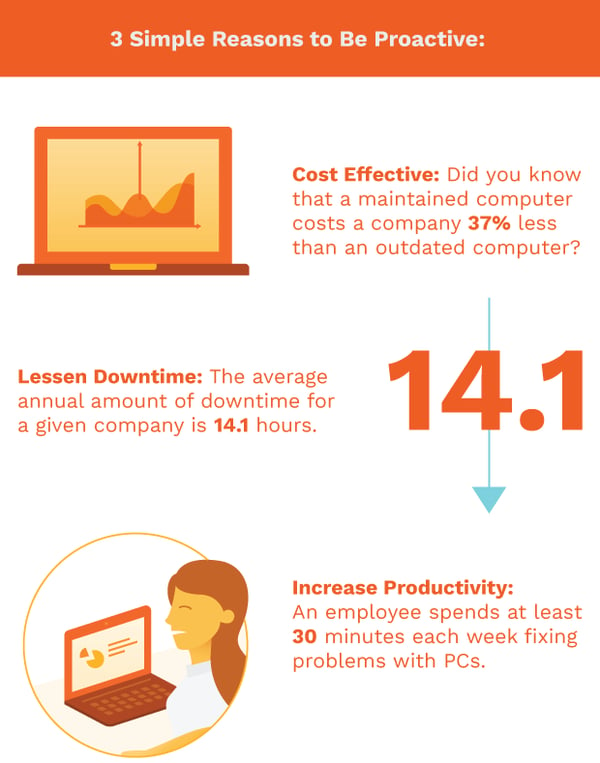Sooner or later, most companies fall into adopting a reactive approach out of laziness, complacency, or the assumption that it cuts costs. It stems from the old-school mentality of “If it’s not broken, why fix it?”
Why exactly does this matter? In this complex interconnected global economy, being reactive only hinders your company’s progress. It has been seen time and time again that a reactive approach only stunts growth, limits innovation, disempowers employees, and leads to higher costs for your company in the long-term. As a business owner you must notice the signs of a reactive work environment and know the benefits of adopting a proactive system.

Reactive Signs: Problems Before Solutions
What does it even mean to be reactive? Simply put, being reactive towards issues means that you’re taking the backseat on problems that occur. Instead of actively searching for ways to fix issues before they arise, a reactive system fixes problems only after they arise. Being reactive towards the obstacles your company faces only stunts the growth your business can achieve. Constantly having to fix what breaks down can greatly hinder your company and prevents you from reaching new heights.
Reactive approaches are deceptive in the sense that it seems to be more efficient and cost effective to fix as you go, but this is rarely ever going to be the case for any company.

Proactive Signs: Recognizing Issues Before They Become Problems
So what does it mean to be proactive instead? It means you’re being mindful every step of the way to minimize loss and maximize your company’s innovative potential. Think of it less as a chore and more as an investment on your equipment, software, employees, and your future.
Office technology is a domain that greatly benefits from a proactive approach. By recognizing any latent issues and making key strategies, your company can be protected and kept up to speed in a competitive and creative environment. Endemic and external issues alike can be mitigated by being a proactive leader and recognizing inefficient workflows.
Being proactive is also much more than being vigilant. It involves you having the knowledge to understand that making the effort early on to combat errors and technical difficulties are better than making the effort to conduct damage control which will end up hurting your company in the long run. Healthy companies remain healthy by constantly searching for proactive solutions in their operations. Proactive companies will routinely keep their technology up to speed and never have an attitude of complacency when it comes to office workflows.

BUT WHY?
You may be thinking that reworking your systems to reflect a proactive model sounds expensive, especially if you’re a smaller business. If you’re in a reactive slump, employees won’t be able to dedicate the necessary time for their tasks or to your customers. When your company is productive and cost-effective, employees will have the necessary tools and time to complete their job. Thus, your customers will be pleased with your service which takes out two birds with one stone.
Technology is the heart and soul of any business and your company needs to be proactive in order to mount the proper responses and defenses to keep it running like a well-oiled machine. Metaphorically it’s like the immune system. The immune system is proactive all the time making sure that the body does not get sick or cease to function. Yes, it’s true that it can be reactive when infection does occur, but these happen rarely when it’s proactively engaging all defenses. Being proactive with your company is the same way, you can’t stop every single technological meltdown, but by being proactive, you can be assured that you’ve taken the first steps to saving yourself a great deal of stress and worry in the future.
If you realized that your company has been practicing a reactive approach, the switch to becoming proactive is simple. Formulate a process that predicts problems before they arise and have a policy and a team in place to combat any technological mishaps. If you’re wondering about the cheapest and most productive way to conduct business, remember that in the long run, taking a reactive approach costs more in the end- and not just in dollar value.
Categories: Office Hacks, Managed Services










